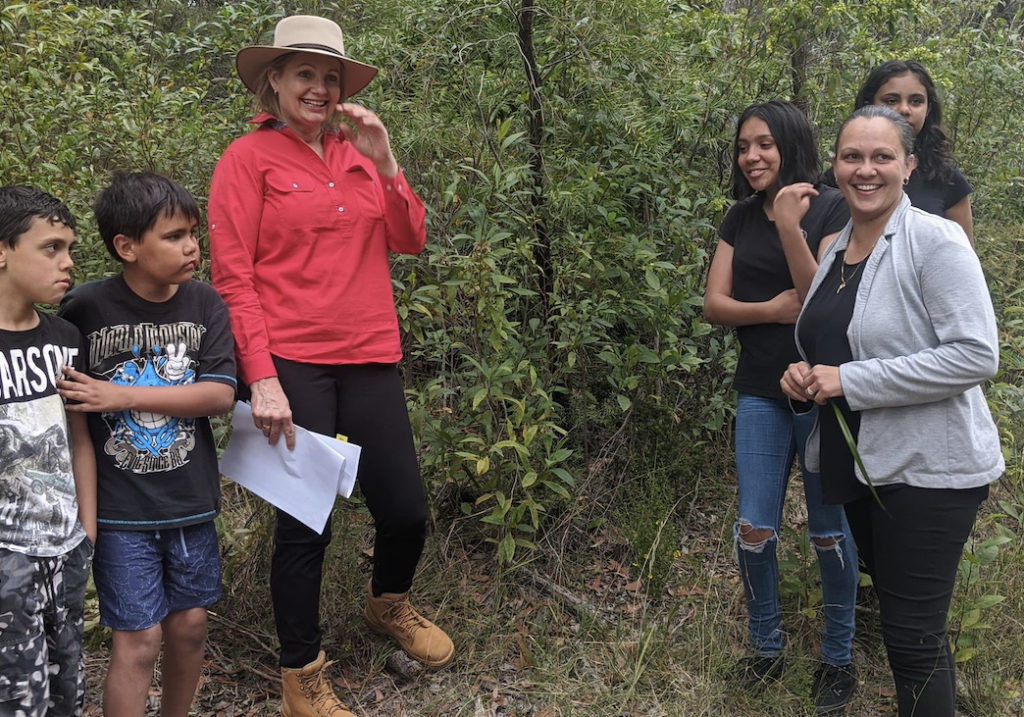Housing development threat to Butterfly Cave Aboriginal Women’s site
During NAIDOC Week, a group of Aboriginal women are appealing to the Federal Environment Minister to step in and enforce legal protections on the ancient Butterfly Cave site at Lake Macquarie, NSW, which is under threat from a housing development.
The Butterfly Cave – a sacred women’s site for the local Awabakal people – was declared a protected site last year under the Federal Aboriginal and Torres Strait Islander Heritage Protection (ATSIHP) Act, in an historic move that attracted widespread community support. It was only the second time since 1999 that the Federal Environment Minister protected a site under the Act.
While the cave and its immediate surrounds are protected from bulldozers, the women say the development would cut off important generations-old access routes to the site. The development will also remove vital privacy at the site, in contravention of section 6 of the Minister’s ATSIHP Act declaration.
Represented by the Environmental Defenders Office, the group has written to the Hon. Sussan Ley, asking her to stop Stage 7 and 9 of the Hammersmith Pty Ltd/Roche Group-developed Appletree Grove Estate.
The group says plans lodged with Lake Macquarie City Council show roads will be built immediately adjacent to the declared area, restricting access and impacting its use as a sacred place for women’s business by increasing the visibility of the declared area.
EDO lawyers wrote to the developer, Hammersmith Pty Ltd/Roche Group, in July outlining the group’s concerns. Hammersmith Pty Ltd/Roche Group has so far failed to respond.
Last month, Minister Ley visited the Butterfly Cave and met with a group of Awabakal women and children. They voiced their concerns about the development directly to the Minister and presented her with a 163,000-name petition calling on her to enforce the ATSIHP Act declaration to save the site.

Anne Andrews, spokesperson for the Sugarloaf and Districts Action Group says the Awabakal women need privacy to practice their culture, and that means the seclusion of the cave needs to be preserved.
“We’ve had the Butterfly Cave dated back at least 6,000 years. What will be lost is the passing down of knowledge between elders and young people. It’s a spiritual journey when you go there. You have to smell the plants, feel the water.
“My heart is breaking seeing what’s happening with this site. It’s women’s business. What we do there is private and important to us.
“It’s been so hard for us as women to stand up for ourselves. We’re not bowing down. This is a special site and it needs to be saved. And we’re not going to back down.”
The theme of NAIDOC Week 2020 is ‘Always Was, Always Will Be’, recognises that First Nations peoples have occupied and cared for this continent for over 65,000 years and are spiritually and culturally connected to this country.
EDO Special Counsel Rana Koroglu says the ATSIHP Act is designed to protect cultural heritage, and when protective declarations are made, they need to be enforced.
“Awabakal women have been coming to the Butterfly Cave for generations and it continues to be an important cultural site for secret women’s business.
“To preserve the sacred and private nature of the Butterfly Cave, the Minister must ensure it remains secluded. That means no clearing which would increase the visibility of the site and the development cannot encroach on the declared area in any way.
“Very few sites have been declared under the ATSIHP Act. If the Act is to have any practical meaning, the Minister must ensure the Butterfly Cave can continue as an active cultural site.”





